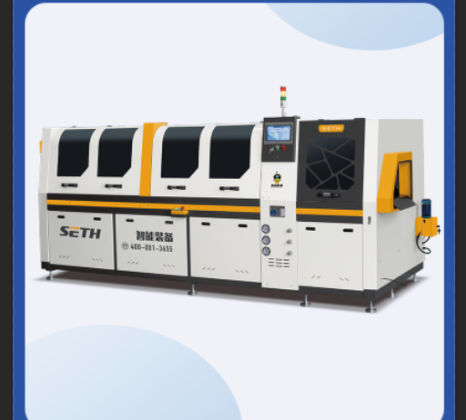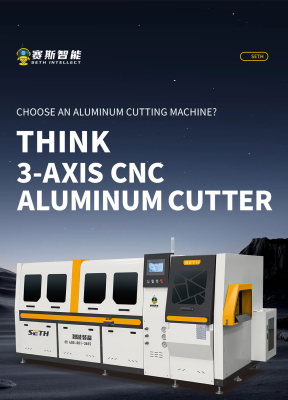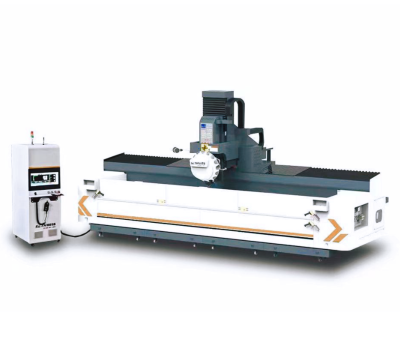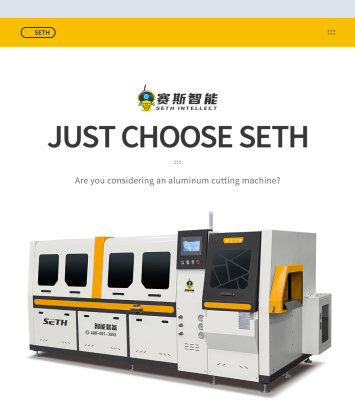Aluminum Cutting Saw Machinery CNC Full automatic cuting machine
1 Significantly Higher Production Efficiency
2. Ultra-High Cutting Precision and Consistency
3. Reduced Labor Dependence and Operational Ease
4. Enhanced Safety for Operators and Equipment
5. Long-Term Cost Savings
6. Versatility for Diverse Aluminum Profile Applications
Technical Specifications and Introduction of Full-Automatic Aluminum Cutters
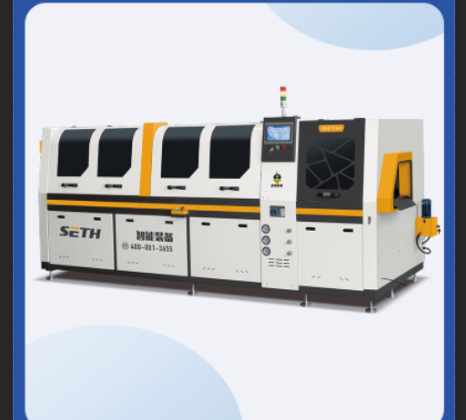 Full-automatic aluminum cutters are advanced CNC-driven machines engineered for high-precision, high-efficiency cutting of aluminum profiles across industries like construction, electronics, and transportation. Their technical specifications directly determine performance metrics such as cutting accuracy, production speed, and material compatibility, while their design features (e.g., automatic feeding, intelligent monitoring) address the demands of modern mass production. Below is a detailed breakdown of their key technical specifications and a comprehensive introduction to their functionality.
Full-automatic aluminum cutters are advanced CNC-driven machines engineered for high-precision, high-efficiency cutting of aluminum profiles across industries like construction, electronics, and transportation. Their technical specifications directly determine performance metrics such as cutting accuracy, production speed, and material compatibility, while their design features (e.g., automatic feeding, intelligent monitoring) address the demands of modern mass production. Below is a detailed breakdown of their key technical specifications and a comprehensive introduction to their functionality.
1. Core Technical Specifications Technical specifications vary slightly by manufacturer (e.g., HAAS, TRUMPF, or local industrial brands), but the following parameters represent industry standards for mid-to-high-end full-automatic aluminum cutters. All values are based on common models suitable for processing standard aluminum profiles (6000-series alloys, e.g., 6061, 6063).
1.1 Cutting Performance Parameters
Parameter
Specification Range
Description
Max Cutting Capacity
Cross-section: 10mm×10mm to 300mm×300mm; Length: 100mm to 12,000mm
Defines the largest/smallest aluminum profiles the machine can process. For example, a 300mm×300mm capacity accommodates large structural beams, while 100mm min length suits small components like electronic heat sinks.
Cutting Accuracy
Dimensional tolerance: ±0.05mm to ±0.1mm; Angle tolerance: ±0.1°
Critical for industries requiring precision (e.g., aerospace, solar panel frames). The ±0.05mm tolerance ensures consistent length matching for interlocking profiles.
Cutting Speed
2,000 RPM to 6,000 RPM (for TCT blades)
Varies by blade type and profile thickness. Higher RPM (6,000) is used for thin profiles (e.g., 10mm sheets) to reduce heat buildup; lower RPM (2,000) suits thick profiles (e.g., 50mm rods) to maintain blade stability.
Cutting Angle Range
0° (straight cut) to 90° (miter cut), adjustable in 0.1° increments
Supports complex cuts for assembly (e.g., 45° angles for furniture frames, 30° angles for architectural trim).
Blade Diameter
250mm to 400mm
Larger blades (400mm) handle wider profiles, while smaller blades (250mm) offer faster acceleration for high-volume thin-profile cutting.
1.2 Structural & Dimensional Parameters
Parameter
Specification Range
Description
Machine Dimensions (L×W×H)
3,500mm×1,800mm×2,200mm to 6,000mm×2,500mm×2,500mm
Depends on feeding system length (longer machines support 12m profiles). A 6,000mm-long machine is typical for processing full-length extruded aluminum bars.
Weight
1,500kg to 4,000kg
Heavier machines (4,000kg) feature reinforced frames for reduced vibration during high-speed cutting, improving accuracy.
Feeding System Type
Belt conveyor or robotic arm; Feeding speed: 5m/min to 15m/min
Belt conveyors are cost-effective for standard profiles; robotic arms (15m/min speed) suit irregularly shaped profiles. Feeding speed syncs with cutting speed to minimize cycle time.
Clamping Force
500N to 2,000N (pneumatic/hydraulic)
Adjustable to avoid damaging soft aluminum. Lower force (500N) for thin profiles; higher force (2,000N) for thick, rigid profiles to prevent movement during cutting.
1.3 Electrical & Control Parameters
Parameter
Specification Range
Description
Power Supply
380V/50Hz (3-phase) or 220V/60Hz (single-phase for small models)
Industrial-grade 3-phase power ensures stable motor operation for high-torque cutting.
Control System
CNC (e.g., Siemens SINUMERIK, Fanuc 0i-MF)
Enables pre-programmed cutting sequences, real-time parameter adjustment, and fault diagnosis. Supports G-code/M-code for custom cuts.
Sensor Type
Laser length sensor (accuracy: ±0.01mm); Vibration sensor; Temperature sensor
Laser sensors ensure precise length measurement; vibration/temperature sensors detect blade wear or motor overheating, triggering alerts.
Interface
10-inch to 15-inch touchscreen; USB port; Ethernet port
Touchscreen simplifies parameter input; USB/Ethernet allows program import/export and remote monitoring (e.g., production data tracking via factory IoT systems).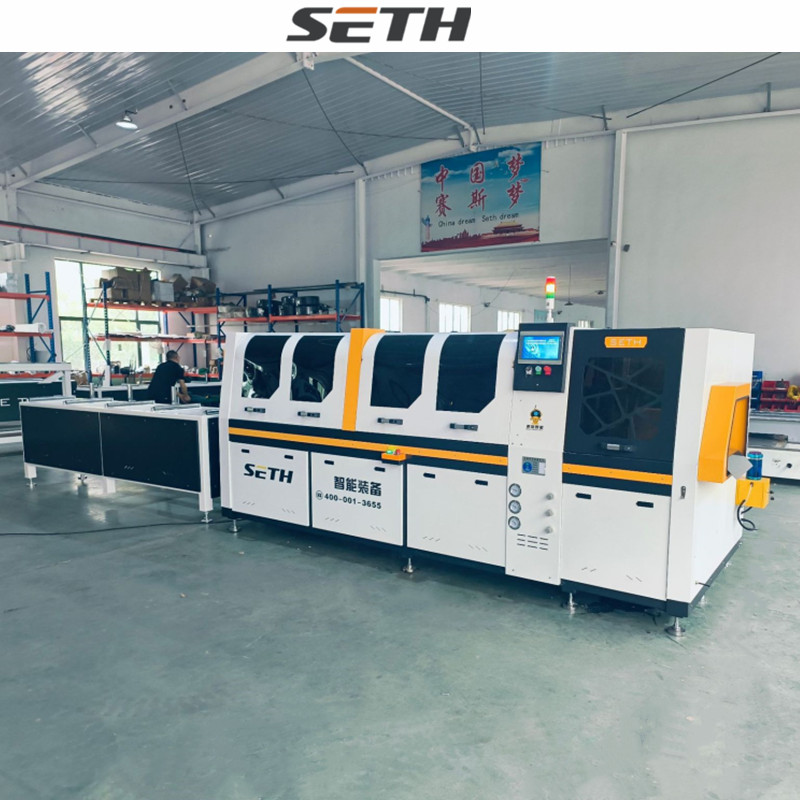 1.4 Safety & Environmental Parameters
Parameter
Specification Range
Description
Safety Features
Enclosed cutting chamber; Emergency stop buttons (×3); Safety interlocks; Noise level: ≤80dB
Enclosed chambers prevent chip ejection; interlocks stop the machine if the door is opened. ≤80dB meets OSHA workplace noise standards.
Cooling System
Water-cooled or air-cooled blade; Coolant tank capacity: 10L to 30L
Water cooling is more effective for high-RPM cutting (reduces blade temperature by 40–60°C); coolant prevents aluminum adhesion to the blade.
Chip Collection
Integrated chip conveyor + 50L to 100L collection bin
Automatically removes aluminum chips, reducing manual cleaning and fire risks (aluminum chips are flammable).
1.4 Safety & Environmental Parameters
Parameter
Specification Range
Description
Safety Features
Enclosed cutting chamber; Emergency stop buttons (×3); Safety interlocks; Noise level: ≤80dB
Enclosed chambers prevent chip ejection; interlocks stop the machine if the door is opened. ≤80dB meets OSHA workplace noise standards.
Cooling System
Water-cooled or air-cooled blade; Coolant tank capacity: 10L to 30L
Water cooling is more effective for high-RPM cutting (reduces blade temperature by 40–60°C); coolant prevents aluminum adhesion to the blade.
Chip Collection
Integrated chip conveyor + 50L to 100L collection bin
Automatically removes aluminum chips, reducing manual cleaning and fire risks (aluminum chips are flammable).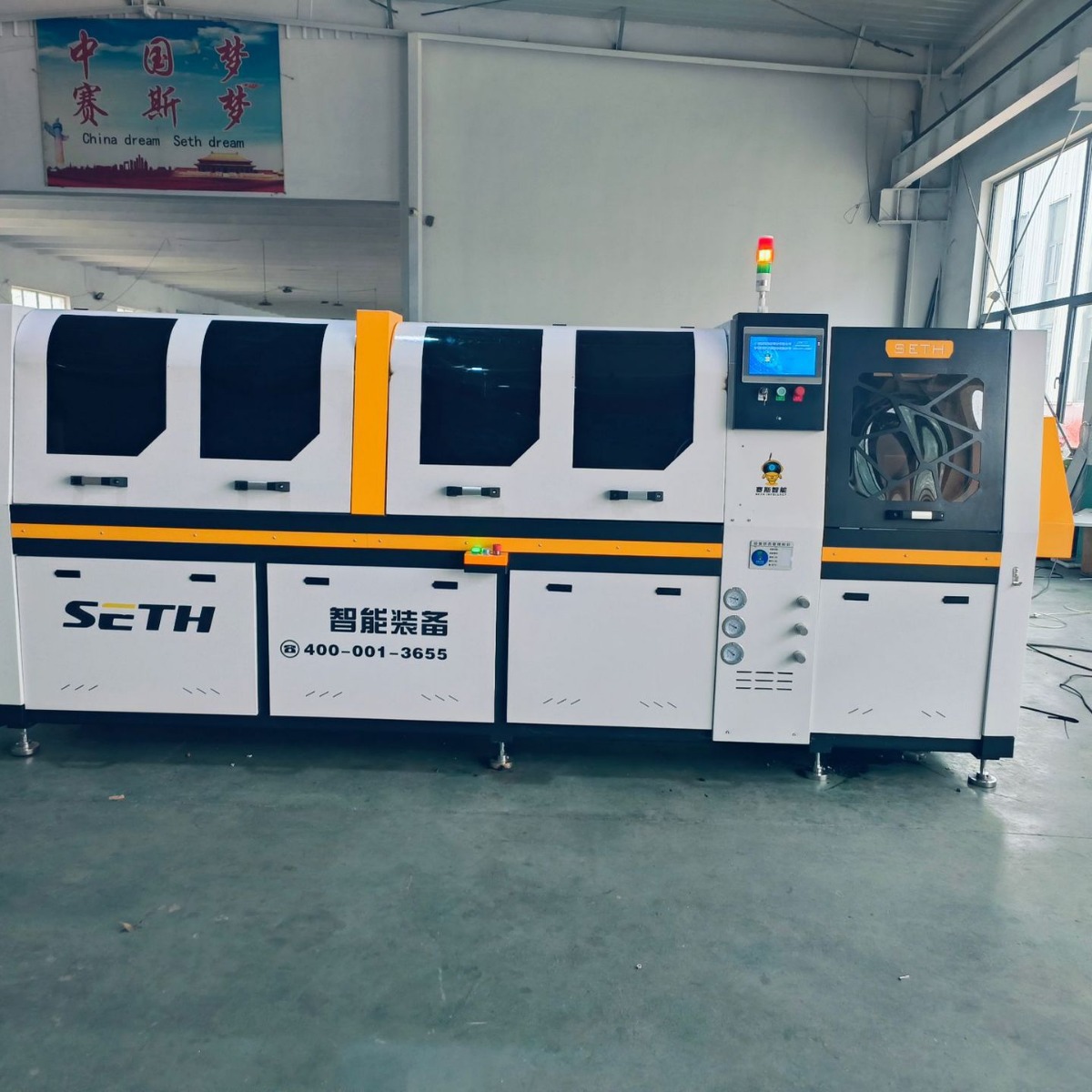 2. Introduction to Full-Automatic Aluminum Cutters
2.1 Working Principle
Full-automatic aluminum cutters operate in a closed-loop, CNC-controlled workflow that minimizes human intervention:
Material Loading: Aluminum profiles are loaded into the automatic feeding hopper (or placed on the belt conveyor). The laser length sensor scans the profile to confirm dimensions and alignment.
Parameter Setup: Operators input cutting parameters (length, angle, speed) via the touchscreen, or select pre-programmed templates (e.g., "solar panel frame cut" or "window trim cut").
Clamping & Positioning: The pneumatic/hydraulic clamp secures the profile in place, and the feeding system moves it to the cutting position with ±0.01mm precision (guided by the CNC system).
Cutting Execution: The high-speed TCT blade (driven by a servo motor) rotates at the set RPM, cutting the profile while the cooling system sprays coolant to reduce heat and friction.
Unloading & Chip Management: Finished profiles are automatically discharged to a collection table; chips are transported via the conveyor to the collection bin. The machine then resets for the next cut, repeating the cycle.
2.2 Key Design Features
Intelligent Blade Management: Most models include blade wear compensation—sensors detect reduced cutting efficiency (e.g., increased vibration) and automatically adjust cutting speed or feed rate. Some machines even display a "blade replacement alert" when wear exceeds 0.2mm.
Batch Processing Optimization: The CNC system stores up to 100+ cutting programs, allowing seamless switching between batches. For example, after processing 500 window frames (45° angle, 1.2m length), the machine can immediately switch to cutting 300 heat sinks (90° angle, 0.3m length) by selecting the pre-saved program.
Remote Monitoring & Maintenance: Via the Ethernet port, technicians can access real-time data (e.g., cutting count, blade temperature, error logs) from a central control room. This enables predictive maintenance—for instance, scheduling blade replacement before it causes quality issues.
2.3 Typical Applications
Full-automatic aluminum cutters are versatile across industries, with common use cases including:
Construction: Cutting aluminum curtain wall profiles, door/window frames, and handrails (requires 0.1mm accuracy for seamless assembly).
Electronics: Processing thin aluminum profiles for heat sinks, LED light housings, and circuit board enclosures (small cutting length, high volume).
Transportation: Cutting aluminum components for electric vehicle (EV) chassis, train carriage frames, and bicycle frames (thick profiles, high strength requirements).
Renewable Energy: Fabricating aluminum frames for solar panels (requires consistent length to ensure panel alignment) and wind turbine components.
2.4 Comparison with Semi-Automatic Cutters
To highlight their advantages, here’s a side-by-side comparison with semi-automatic models (based on processing 1,000 aluminum profiles/day):
Metric
Full-Automatic Cutter
Semi-Automatic Cutter
Production Efficiency
120 profiles/hour (8-hour shift: 960 profiles)
50 profiles/hour (8-hour shift: 400 profiles)
Labor Requirement
1 operator for 2–3 machines
1 operator per machine
Scrap Rate
1–2% (due to ±0.05mm accuracy)
5–8% (due to manual positioning errors)
Setup Time for New Batches
5–10 minutes
30–60 minutes
3. Conclusion
Full-automatic aluminum cutters combine high-precision CNC control, automated material handling, and intelligent safety features to meet the demands of modern aluminum processing. Their technical specifications—such as ±0.05mm cutting accuracy, 6,000 RPM blade speed, and 12m profile capacity—enable efficient, consistent production across industries. By eliminating manual errors, reducing labor costs, and minimizing scrap, these machines deliver long-term value for manufacturers scaling up aluminum profile production. As technology advances, future models may integrate AI-driven predictive maintenance (e.g., AI analyzing sensor data to predict blade failure) and robotic integration for fully automated production lines, further enhancing their performance and versatility.
2. Introduction to Full-Automatic Aluminum Cutters
2.1 Working Principle
Full-automatic aluminum cutters operate in a closed-loop, CNC-controlled workflow that minimizes human intervention:
Material Loading: Aluminum profiles are loaded into the automatic feeding hopper (or placed on the belt conveyor). The laser length sensor scans the profile to confirm dimensions and alignment.
Parameter Setup: Operators input cutting parameters (length, angle, speed) via the touchscreen, or select pre-programmed templates (e.g., "solar panel frame cut" or "window trim cut").
Clamping & Positioning: The pneumatic/hydraulic clamp secures the profile in place, and the feeding system moves it to the cutting position with ±0.01mm precision (guided by the CNC system).
Cutting Execution: The high-speed TCT blade (driven by a servo motor) rotates at the set RPM, cutting the profile while the cooling system sprays coolant to reduce heat and friction.
Unloading & Chip Management: Finished profiles are automatically discharged to a collection table; chips are transported via the conveyor to the collection bin. The machine then resets for the next cut, repeating the cycle.
2.2 Key Design Features
Intelligent Blade Management: Most models include blade wear compensation—sensors detect reduced cutting efficiency (e.g., increased vibration) and automatically adjust cutting speed or feed rate. Some machines even display a "blade replacement alert" when wear exceeds 0.2mm.
Batch Processing Optimization: The CNC system stores up to 100+ cutting programs, allowing seamless switching between batches. For example, after processing 500 window frames (45° angle, 1.2m length), the machine can immediately switch to cutting 300 heat sinks (90° angle, 0.3m length) by selecting the pre-saved program.
Remote Monitoring & Maintenance: Via the Ethernet port, technicians can access real-time data (e.g., cutting count, blade temperature, error logs) from a central control room. This enables predictive maintenance—for instance, scheduling blade replacement before it causes quality issues.
2.3 Typical Applications
Full-automatic aluminum cutters are versatile across industries, with common use cases including:
Construction: Cutting aluminum curtain wall profiles, door/window frames, and handrails (requires 0.1mm accuracy for seamless assembly).
Electronics: Processing thin aluminum profiles for heat sinks, LED light housings, and circuit board enclosures (small cutting length, high volume).
Transportation: Cutting aluminum components for electric vehicle (EV) chassis, train carriage frames, and bicycle frames (thick profiles, high strength requirements).
Renewable Energy: Fabricating aluminum frames for solar panels (requires consistent length to ensure panel alignment) and wind turbine components.
2.4 Comparison with Semi-Automatic Cutters
To highlight their advantages, here’s a side-by-side comparison with semi-automatic models (based on processing 1,000 aluminum profiles/day):
Metric
Full-Automatic Cutter
Semi-Automatic Cutter
Production Efficiency
120 profiles/hour (8-hour shift: 960 profiles)
50 profiles/hour (8-hour shift: 400 profiles)
Labor Requirement
1 operator for 2–3 machines
1 operator per machine
Scrap Rate
1–2% (due to ±0.05mm accuracy)
5–8% (due to manual positioning errors)
Setup Time for New Batches
5–10 minutes
30–60 minutes
3. Conclusion
Full-automatic aluminum cutters combine high-precision CNC control, automated material handling, and intelligent safety features to meet the demands of modern aluminum processing. Their technical specifications—such as ±0.05mm cutting accuracy, 6,000 RPM blade speed, and 12m profile capacity—enable efficient, consistent production across industries. By eliminating manual errors, reducing labor costs, and minimizing scrap, these machines deliver long-term value for manufacturers scaling up aluminum profile production. As technology advances, future models may integrate AI-driven predictive maintenance (e.g., AI analyzing sensor data to predict blade failure) and robotic integration for fully automated production lines, further enhancing their performance and versatility.
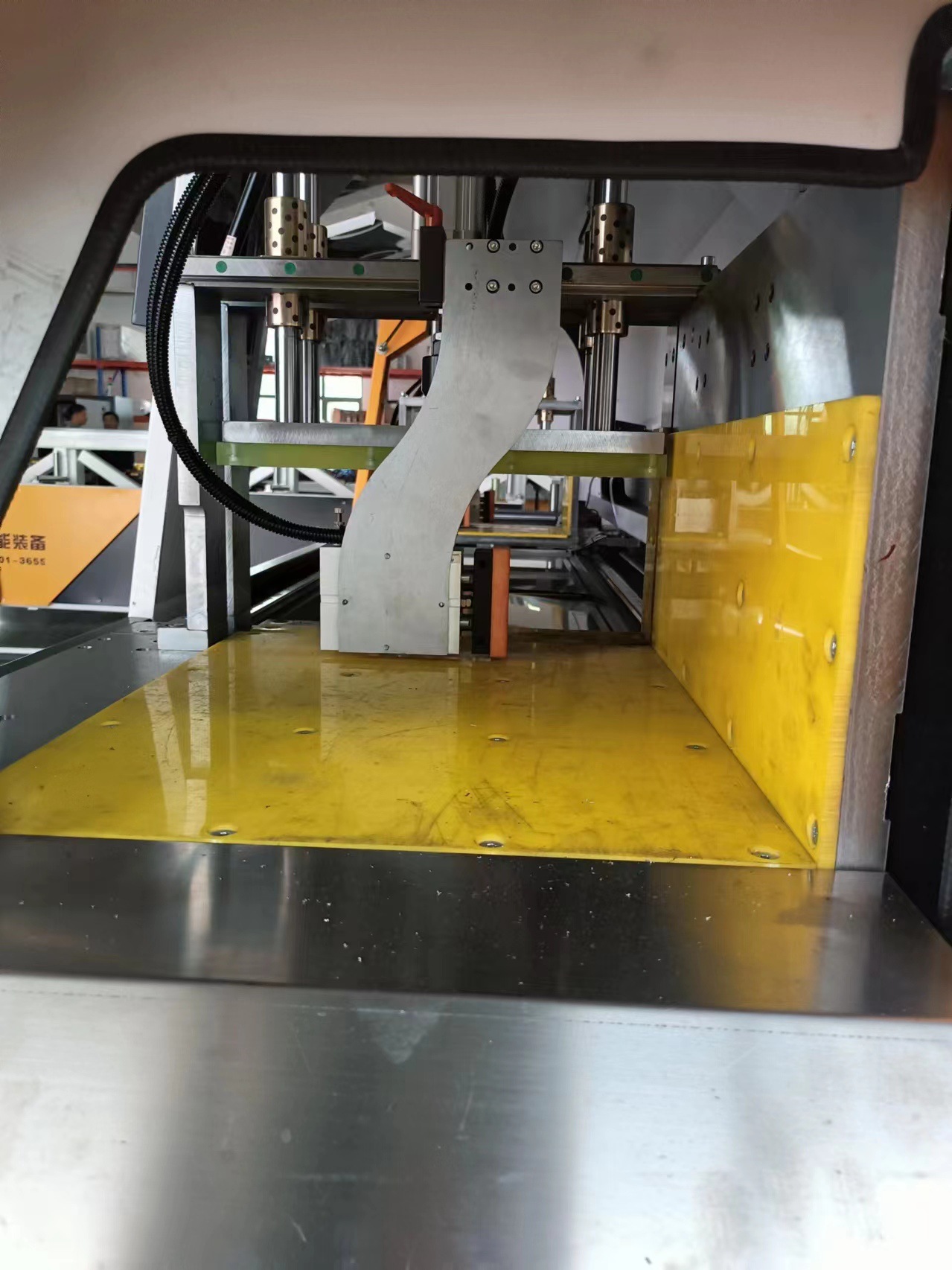
Advantages of Full-Automatic Aluminum Cutting Machines In the field of aluminum profile processing, full-automatic aluminum cutting machines have emerged as a game-changing solution, outperforming traditional manual or semi-automatic cutting equipment in multiple aspects. Designed to integrate advanced automation technologies—such as CNC (Computer Numerical Control) systems, automatic feeding mechanisms, and intelligent monitoring—these machines address key pain points of aluminum cutting, including low efficiency, inconsistent precision, and heavy reliance on operator skills. Below is a detailed breakdown of their core advantages, tailored to the practical needs of aluminum processing manufacturers. 1. Significantly Higher Production Efficiency Efficiency is a top priority for mass aluminum profile production, and full-automatic cutting machines excel in streamlining the cutting process to minimize downtime and maximize output. Continuous Uninterrupted Operation: Unlike semi-automatic machines that require manual intervention for material loading, positioning, or blade adjustments, full-automatic models feature integrated automatic feeding systems (e.g., belt conveyors or robotic arms). These systems can load aluminum profiles (in lengths up to 6–12 meters) continuously, reducing idle time between cuts. For example, a standard full-automatic machine can process 80–120 aluminum profiles per hour, compared to 30–50 profiles per hour for a semi-automatic alternative. Fast Cutting Speeds with Stable Performance: Equipped with high-power servo motors and precision transmission systems, full-automatic cutters maintain consistent cutting speeds (typically 2,000–6,000 RPM for TCT blades) even when handling thick or hard aluminum alloys (e.g., 6061, 7075). The automation system also optimizes cutting paths—for batch cutting of identical profiles, it can pre-program sequence logic to avoid redundant movements, further shortening cycle time. Reduced Setup Time for Batch Changes: When switching between different profile sizes or cutting lengths, operators only need to input new parameters (e.g., length, angle) into the CNC control panel. The machine automatically adjusts the feeding distance, blade position, and clamping force, eliminating the time-consuming manual calibration required for semi-automatic machines. Setup time for new batches can be reduced from 30–60 minutes to 5–10 minutes. 2. Ultra-High Cutting Precision and Consistency Aluminum profiles for industries like aerospace, electronics, or high-end construction demand strict dimensional accuracy (often ±0.1 mm) and uniform cut quality. Full-automatic cutting machines achieve this through advanced precision control technologies: CNC-Driven Positioning and Cutting: The CNC system uses high-resolution encoders (up to 0.001 mm) to monitor the position of the cutting blade and the aluminum profile in real time. This ensures that each cut aligns with the pre-programmed dimensions, even for complex cuts (e.g., miter cuts at 45° or 60°, or notched cuts for assembly). For example, when cutting aluminum frames for solar panels (which require precise length matching to ensure structural stability), full-automatic machines maintain a length deviation of less than ±0.05 mm across 1,000+ pieces. Stable Clamping to Prevent Vibration: Automatic clamping systems (e.g., pneumatic or hydraulic clamps) apply uniform pressure to the aluminum profile during cutting, minimizing vibration that can cause rough edges or dimensional errors. The clamps also adapt to different profile cross-sections (e.g., rods, tubes, or irregular shapes) by adjusting their contact points—this flexibility ensures consistent clamping force regardless of the profile’s geometry. Blade Wear Compensation: Advanced models feature intelligent blade wear monitoring. Sensors detect subtle changes in cutting resistance (a sign of blade dulling) and automatically adjust the cutting speed or feed rate to compensate for wear. Some machines even send alerts when blade replacement is needed, preventing a sudden drop in precision due to dull blades. This ensures that the first and 1,000th cut of a batch maintain the same level of accuracy. 3. Reduced Labor Dependence and Operational Ease Traditional aluminum cutting relies heavily on skilled operators to control feeding, positioning, and blade adjustment—errors from human factors (e.g., fatigue, misjudgment) are common. Full-automatic machines reduce this dependence while simplifying operations: Minimal Operator Intervention: Once the cutting parameters are set and the material is loaded into the feeding hopper, the machine runs independently. Operators only need to monitor the process (via a digital display) and replenish materials when the hopper is empty—this means one operator can manage 2–3 full-automatic machines simultaneously, compared to one operator per semi-automatic machine. Intuitive User Interface for Easy Operation: Most full-automatic cutters are equipped with touchscreen CNC panels that display real-time data (e.g., cutting count, blade temperature, error alerts) in a user-friendly format. Pre-programmed templates for common cutting tasks (e.g., standard window frame lengths) allow even less experienced operators to start production quickly, reducing training costs for manufacturers. Automated Waste and Chip Management: Integrated chip conveyors and waste collection bins automatically remove aluminum chips and offcuts during cutting. This eliminates the need for manual cleaning (a time-consuming and dusty task with semi-automatic machines) and keeps the work area organized. Some models even compress chips for easier recycling, adding value to waste materials. 4. Enhanced Safety for Operators and Equipment Aluminum cutting involves high-speed rotating blades and heavy moving parts, making safety a critical concern. Full-automatic machines incorporate multiple safety features to protect operators and prevent equipment damage: Enclosed Cutting Chamber with Safety Interlocks: The cutting area is fully enclosed to prevent operators from touching the rotating blade or being hit by flying chips. Safety interlocks automatically stop the machine if the chamber door is opened during operation—this eliminates the risk of accidental contact, a major hazard with open semi-automatic cutters. Real-Time Fault Detection and Emergency Stop: Sensors monitor key components (e.g., blade temperature, motor current, hydraulic pressure) in real time. If an abnormality is detected (e.g., overheating blade, jammed feeding system), the machine immediately triggers an emergency stop and displays an error code on the control panel. This prevents equipment damage (e.g., blade breakage, motor burnout) and reduces the risk of accidents. Compliance with Safety Standards: Most full-automatic aluminum cutting machines meet international safety standards (e.g., CE, OSHA) for machinery safety. This includes features like emergency stop buttons (accessible from multiple positions), noise reduction enclosures (to limit noise levels below 85 dB), and anti-slip feet to stabilize the machine during operation. 5. Long-Term Cost Savings While full-automatic cutting machines have a higher initial investment than semi-automatic models, they deliver significant long-term cost savings through multiple channels: Lower Labor Costs: As one operator can manage multiple machines, manufacturers reduce their labor requirements. For a production line processing 10,000 aluminum profiles per day, the number of operators needed can be cut from 5–6 (for semi-automatic) to 2–3 (for full-automatic), reducing annual labor costs by 40–60%. Reduced Material Waste: The high precision of full-automatic machines minimizes scrap rates. For example, in the production of aluminum heat sinks (where even small dimensional errors render parts unusable), scrap rates can drop from 5–8% (with semi-automatic cutters) to 1–2% (with full-automatic models). For a manufacturer processing 100 tons of aluminum per month, this translates to savings of 4–7 tons of aluminum (worth 10,000– 20,000) per month. Extended Equipment and Blade Lifespan: The automated system’s smooth operation (e.g., controlled feeding, vibration reduction) reduces wear on mechanical components (e.g., motors, bearings) and cutting blades. Blade lifespan, for instance, can be extended by 20–30% compared to semi-automatic use (where inconsistent feeding or clamping accelerates blade dulling). This lowers the frequency of part replacements and maintenance costs. 6. Versatility for Diverse Aluminum Profile Applications Full-automatic aluminum cutting machines are not limited to simple straight cuts—their flexibility makes them suitable for a wide range of aluminum processing needs: Adaptability to Different Profile Types and Sizes: They can handle aluminum profiles with cross-sections from 5 mm × 5 mm (small decorative bars) to 300 mm × 300 mm (large structural beams), and lengths from 100 mm to 12 meters. The adjustable clamping system and interchangeable blade holders (for different blade diameters) further expand their applicability. Support for Complex Cutting Tasks: Beyond straight cuts, many models can perform miter cuts (0°–90°), bevel cuts, and even slotting or notching (with additional tooling). For example, when cutting aluminum frames for furniture (which require 45° miter cuts for seamless corner assembly), the machine can pre-program the angle and automatically adjust the blade orientation—no manual reconfiguration is needed. Compatibility with Integration into Production Lines: Full-automatic cutters can be seamlessly integrated with upstream extrusion lines and downstream processing equipment (e.g., drilling machines, surface treatment lines) via conveyor systems or robotic arms. This creates a fully automated production flow, reducing material handling time and improving overall line efficiency. Conclusion Full-automatic aluminum cutting machines represent a significant upgrade over traditional cutting equipment, offering unmatched efficiency, precision, and safety for aluminum profile processing. Their ability to reduce labor dependence, minimize waste, and adapt to diverse applications makes them a valuable investment for manufacturers aiming to meet the growing demand for high-quality aluminum products in industries like construction, transportation, electronics, and renewable energy. As automation technology continues to advance—with features like AI-driven predictive maintenance and IoT-based remote monitoring—full-automatic cutters will further solidify their role as a cornerstone of modern aluminum processing operations.
Related Products
Submitted successfully
We will contact you as soon as possible

